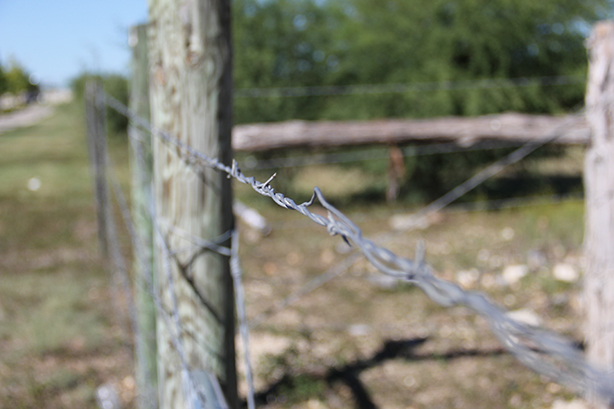
By Alma Linda Manzanares
The College of Arts and Sciences will implement an 18-hour minor focusing on the United States-Mexico borderlands to offer students an interdisciplinary understanding of the region.
Dr. Rosario Torres-Raines, coordinator and faculty adviser for Southwest Borderlands Studies, said the minor helps support the university’s mission of educating the South Side Latino population by offering a better understanding of their background.
“Now we have some offerings in the reality of the border,” she said. “A student has an opportunity to know something about the culture, about the reality, about the impact that the borderlands have. They will have greater insights, greater learning opportunities, that is going to provide a richer base of knowledge about their regional area.”
Torres-Raines spearheaded the minor with a faculty committee and submitted a curriculum proposal in Fall 2013. The minor incorporates courses in sociology, history, political science and English, with focus on the history, politics, economics and other aspects of the borderlands.
Torres-Raines directed the Southwest Borderlands Cultural Studies and Research Center at Texas A&M University-Kingsville between 1985-1999. Her research specialties include Mexican-American women, South Texas communities, residential segregation and U.S.-Mexico issues.
Amy Porter, assistant history professor and Spanish borderlands historian, said a borderlands study complements the culture of the university.
“The university is rooted in Spanish culture. You see it in the architecture, you see it in the paintings on the walls,” she said. “This minor fits our student population; it fits our mission.”
Porter connected the growth of the borderlands minor to other recent university developments, including President Maria Hernandez Ferrier’s upcoming move to the campus’ downtown Educational and Cultural Arts Center where she will serve as director of development and Mexican relations in January. Ferrier will oversee relations between The Texas A&M University System and Mexico.
“It all fits together,” Porter said.
Texas makes up half of the 2,000 mile border between the U.S. and Mexico, with San Antonio making up the most populated city in the border region. The Texas borderlands incorporates the area between San Antonio and Monterrey, Mexico.
Torres-Raines said she wanted to create the minor because of the readily available resources in San Antonio.
“Our students should have a really good option to understand their geographic area when they do a minor,” she said. “Our institution, because of its location in San Antonio, is going to have experts in the community that could support this minor through their expertise, through their professions, to the things they do on an everyday basis here.”
The interdisciplinary minor allows all students, regardless of career aspirations, to benefit from the study, Porter said.
“We live in the borderlands. So to understand where we live from a historic and economic, sociological, political perspective, sheds light in so many different areas,” she said.
Francis Galan, visiting assistant history professor, agreed that understanding the borderlands region in terms of business, politics and culture is important because business sector growth, such as the Eagle Ford Shale, is intertwined with Mexico.
He said students seeking employment in the areas of transportation, oil and gas fields should have an understanding of the whole borderlands region, instead of just the U.S. or Mexico.
Galan teaches HIST 4348, History of the Mexican-American in the Southwest, and HIST 4346, Texas History. He will teach Texas History and HIST 4356, Mexico, during Spring 2015. All three courses count toward the minor.
“It’s as if you’re looking at Mexican-Americans being invisible in society (without understanding the region),” Galan said.
Torres-Raines plans to incorporate criminology into the program for students seeking careers in law enforcement.
Porter said she finds the study attractive because it’s an understudied area. She explained how history in K-12 education is geared toward the East Coast, focusing on the British rule and the 13 colonies.
“It’s important to history and it’s fascinating but it wasn’t until I was older that I realized there’s a lot of history here too and it’s important,” she said. “I think a lot of our students are having that same realization.”
Torres-Raines said she is drawn to the borderlands because it’s an exciting, dynamic area that contains the best and worst of the U.S. and Mexico.
“To me, it’s a bubbling cauldron,” she said. “Things change, happen and bring together people that are engaged in the development of their countries. … I see so much of our present reality and our future reality being tied up with this region that exists on both parts of an international line.”
The minor rolls out with the foundation course, SOCI 4365, Introduction to Southwest Borderlands Studies, being taught for the first time by Torres-Raines. Spring 2015 will also feature an art exhibition and symposium on the U.S.-Mexico borderlands that will highlight the minor.
Southwest Borderlands Studies courses:
Sociology:
SOCI 4365, Introduction to Southwest Borderlands Studies
History:
HIST 4344, American Frontier
HIST 4346, Texas History
HIST 4348, History of the Mexican-American in the Southwest
HIST 4356, Mexico
HIST 4380, Crucial Topics in United States History
HIST 4392, Crucial Topics in Latin American History
Political Science:
POLS 3341, International Relations
POLS 4355, The Government and Politics of Mexico
POLS 4370, Special Studies in Political Science (If it’s a topic relevant to the borderlands.)
English:
ENGL 4385, Studies in Multi-ethnic Literatures (Counted when taught from Mexican American or borderlands perspective.)
Students cannot take more than nine semester hours in any one discipline. Students cannot count the same course toward both the borderlands minor and a major in sociology, history, political science or English.






